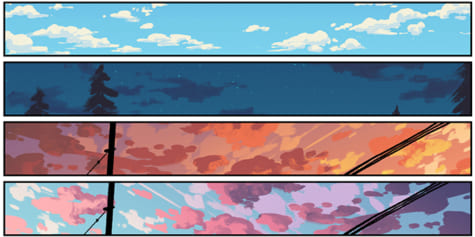“A cross-section provides a side view, or profile, of a landscape. This view enables us to see how this shape of the land influences land use such as settlement, drainage and vegetation.”
Here are some cross-sections (side views) of everyday items. Can you guess what they are?
In geography, we need to learn how to draw cross-sections from topographical maps. Let’s look at this step-by-step:
1. Locate two points on a map between which the cross-section is to be made. Label these points A and B
1. Locate two points on a map between which the cross-section is to be made. Label these points A and B
2. Place a straight edge of paper from point A to point B and join the dots. Also you need to mark points A and B on your piece of paper.
3. On your paper, mark the position where your paper crosses each contour line. Write the value of each contour line on your piece of paper (you may need to estimate the height of your starting and finishing points)
4. On graph paper, draw the horizontal and vertical axes from your cross-section. The length of the horizontal access should be as wide as the distance between points A and B. Your vertical axes need to use a scale (distance between each increment) that will not exaggerate the height of the cross-section. We don’t want a small hill looking like Mt Everest!
5. Place your piece of paper along the horizontal axis. In pencil, plot (dot) the contour points and heights as if you were drawing a line graph.
6. Join the dots with a single smooth, curved line.
7. Label any features intersected by your cross-section (i.e., river, major roads etc)
8. Finish off your cross-section by:
Confused?!?! See this video:
3. On your paper, mark the position where your paper crosses each contour line. Write the value of each contour line on your piece of paper (you may need to estimate the height of your starting and finishing points)
4. On graph paper, draw the horizontal and vertical axes from your cross-section. The length of the horizontal access should be as wide as the distance between points A and B. Your vertical axes need to use a scale (distance between each increment) that will not exaggerate the height of the cross-section. We don’t want a small hill looking like Mt Everest!
5. Place your piece of paper along the horizontal axis. In pencil, plot (dot) the contour points and heights as if you were drawing a line graph.
6. Join the dots with a single smooth, curved line.
7. Label any features intersected by your cross-section (i.e., river, major roads etc)
8. Finish off your cross-section by:
- Shading in the area below the line
- Labelling the scale on the horizontal and vertical axes
- Giving your cross-section a title.
Confused?!?! See this video:
Now it’s your turn. Using the map below, draw these cross-sections:
1. Start by using points C and D:
2. Now try by using points A and B:
1. Start by using points C and D:
- What is the difference between each contour line?
- Check with your partner
2. Now try by using points A and B:
- Don’t forgot to include the lake!
- Check with your partner





